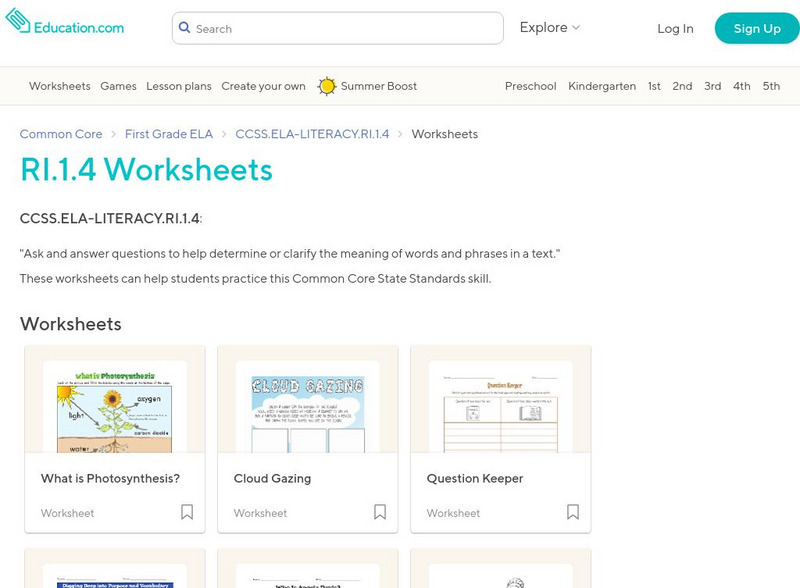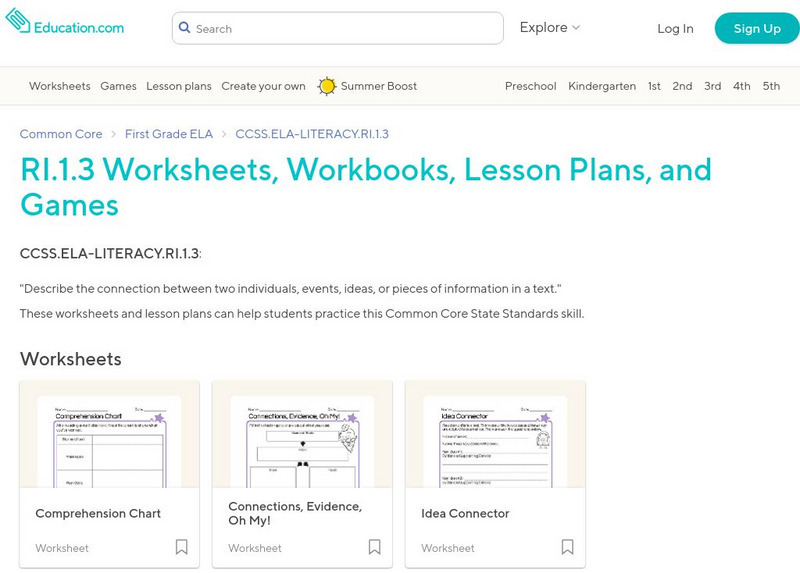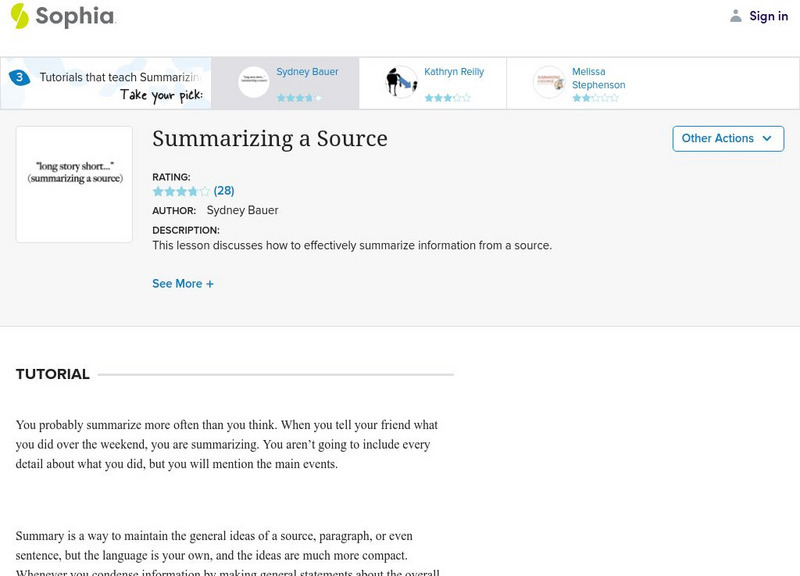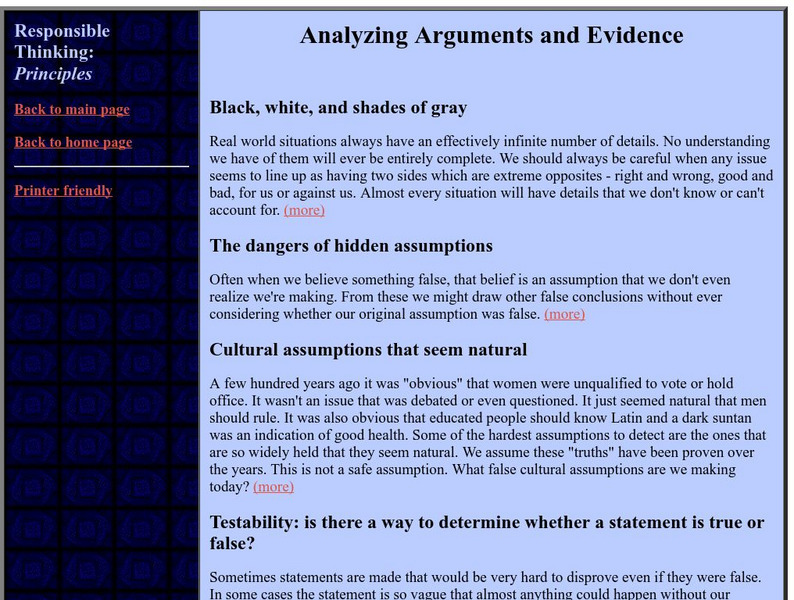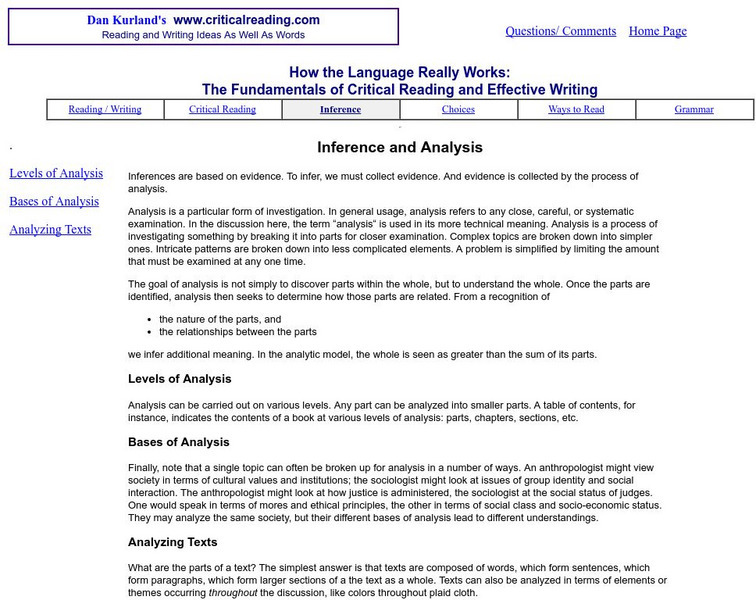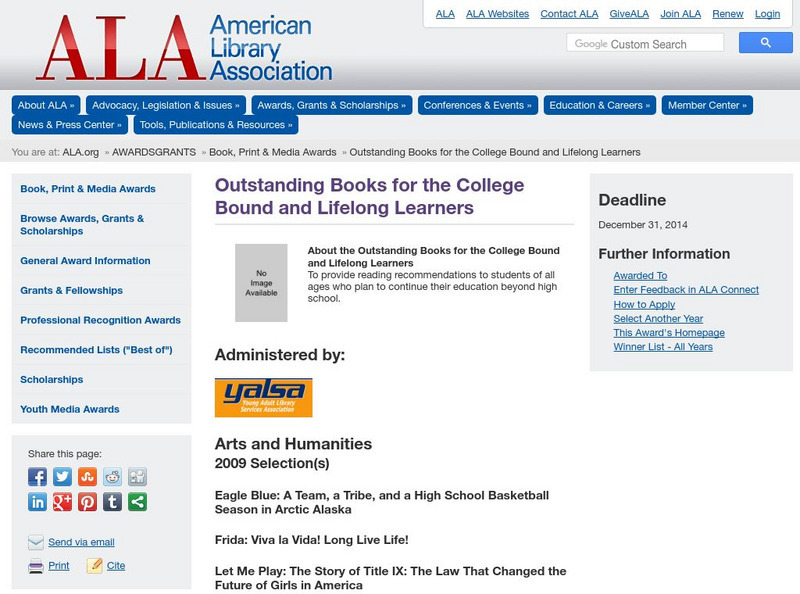Hi, what do you want to do?
Georgia Department of Education
Ga Virtual Learning: "No News From Auschwitz" by A. M. Rosenthal [Pdf]
This two-page PDF is the article "No News from Auschwitz" by A. M. Rosenthal, written after his visit to Auschwitz, the site of the Nazi concentration camp. It was published in The New York Times in 1958. RI.11-12.10b Text Complexity
TES Global
Blendspace: Ri/rl 5.6 Point of View
Work through twenty-two links to pictures, charts, and videos to learn more about point of view in both informational and literary texts.
Education.com
Education.com: Ri.1.4 Worksheets
[Free Registration/Login Required] Choose from a variety of worksheets to practice the common core standard of asking questions to determine unknown words in an informational text.
Education.com
Education.com: Ri.1.3 Worksheets, Workbooks, Lesson Plans, and Games
[Free Registration/Login Required] Choose from a variety of resources to teach and reinforce the common core standard of describing connections between two individuals, events, ideas, or pieces of information in a text.
Education.com
Education.com: Ri.2.7 Worksheets
[Free Registration/Login Required] These worksheets can help students practice the Common Core State Standards skill of explaining how specific images (e.g., a diagram showing how a machine works) contribute to and clarify a text.
University of North Carolina
Unc: First Person Narratives of the American South
A unique collection of first-person accounts, this concentrates on all the populations of the South, such as ex-slaves, enlisted men, middle-class women, displaced plantation owners. The works are sorted by the author's name. To search...
Pennsylvania State University
Pennsylvania State University (Dr. Mc Clennen): How to Do a Close Reading
This guide is written for college students, but should be very useful for upper level high school students as well. The writer first describes fourteen steps to take in doing a close reading, then provides six pieces of advice on how to...
AdLit
Ad lit.org: Teaching Word Meanings as Concepts
The most effective vocabulary instruction teaches word meanings as concepts; it connects the words being taught with their context and with the students' prior knowledge. Six techniques have proven especially effective: Concept...
Sophia Learning
Sophia: Summarizing a Source
Information that can be read or listened to that discusses two methods of how to write effective summaries as well as how to avoid plagiarism when summarizing informational texts. Finally, examples of literary summaries are provided....
Polk Brothers Foundation Center for Urban Education at DePaul University
De Paul University: Center for Urban Education: Evaluate the Strength of Evidence [Pdf]
This resource provides a downloadable worksheet that will assist students after they read a piece of nonfiction. Students will answer guided questions to help them determine the strength of evidence used when supporting a claim....
ReadWriteThink
Read Write Think: Using Comprehension Strategies With Elie Wiesel's Night
Working in small groups, students read and discuss Elie Wiesel's memoir Night and then take turns assuming the "teacher" role, as the class works with four different comprehension strategies.RI.11-12.4 Word meaning, RI.11-12.10b Text...
Other
Responsible Thinking: Analyzing Arguments and Evidence
Contains many points to consider when analyzing someone's arguments and evidence, such as the hidden assumptions, cultural assumptions, and testability. Each is explained in a short paragraph with a link to additional discussions on...
Sophia Learning
Sophia: Summary and Paraphrase: Tutorial
In this slideshow tutorial, students are provided with notes that distinguish "summarizing" from "paraphrasing" content. Examples of effective summaries and paraphrases of text are provided. Then students have the opportunity to engage...
Other
Critical Reading: Inference and Analysis
This site defines inference and analysis. It explains how analysis works, goals of analysis, levels, bases, and how to analyze text. RL.9-10.1, RL.11-12.1, RI.9-10.1 textual evidence and inferences, RI.11-12.1 textual evidence and...
Sophia Learning
Sophia: Referencing the Author's Purpose
This lesson explains how to reference an author's purpose when answering a reading comprehension question. This tutorial shares an audio version of the lesson's content. [3:14] RI.11-12.6 Eval Purpose, Rhetoric, Style
Capital Community College Foundation
Guide to Grammar and Writing: Principles of Organization
In writing and reading organization is the key to a reader's understanding. A great site for those of you who are looking for some further explanation of organization in writing. There is instruction, an example text, and specific...
Other
Ncrel: Reading Strategies: Before, During, and After [Pdf]
This page provides a detailed chart to aid students' understanding of texts. It goes through the steps of pre-reading, during reading, and after reading, outlining what students should be thinking about as they interact with a text. This...
AdLit
Ad lit.org: Classroom Strategies: Inferential Reading
Teaching students to "read influentially" helps them learn how to read more strategically. This technique is derived from the teaching model that learners develop knowledge via the process of interpreting new information in light of past...
AdLit
Ad lit.org: Teach the Seven Strategies of Highly Effective Readers
To improve students' reading comprehension, teachers should introduce the seven cognitive strategies of effective readers: activating, inferring, monitoring-clarifying, questioning, searching-selecting, summarizing, and...
American Library Association
Outstanding Books for College Bound & Lifelong Learners
The American Library Association offers these suggestions for reading in history, humanities, literature, science, and social studies. RI.11-12.10b Text Complexity
Goshen College
Goshen College: Literary Analysis Guide
This resource not only explains how to analyze a text, but also, provides student examples of literary texts. W.9-10.9b Research/Argum, RI.11-12.5 Evaluate text structure
Sophia Learning
Sophia: Evaluating the Connotation
This lesson focuses on evaluating the connotation of a vocabulary word. It defines connotation and gives an example. It details three steps: read the word in context, determine the tone of the overall reading, and compare the tone with...
Sophia Learning
Sophia: Rhetorical Analysis of "So This Was Adolescence"
This PDF lesson plan prepares students for multiple portions of the AP Language and Composition exam (specifically, the multiple choice section and the rhetorical analysis prompt) by analyzing a brief text which students will be able to...
Other
Santa Rosa Library: How to Evaluate Information Resources
Tips and information about how to evaluate resources, both print and electronic. Includes information about source authority, purpose, objectivity, currency, completeness, and relevance. It includes a printable handout (top right)with...





![Ga Virtual Learning: "No News From Auschwitz" by A. M. Rosenthal [Pdf] Article Ga Virtual Learning: "No News From Auschwitz" by A. M. Rosenthal [Pdf] Article](https://static.lp.lexp.cloud/images/attachment_defaults/resource/large/FPO-knovation.png)

